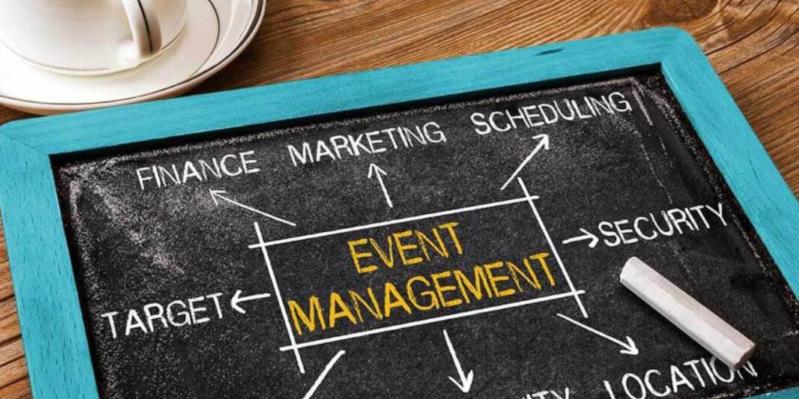How to measure Event Marketing Performance and ROI
Event drives are one of the most effective marketing techniques for any company or product.
It is one of the main factors which helps audiences and clients to connect and communicate with each other directly.
It is estimated that the majority of companies dedicate at least 21% of the marketing budget to organizing events of all sorts. That being said, one would naturally want to know how their companies’ investment into these event marketing performs. Return on investment, better known as ROI, gives us an idea if an event is profitable for a company or not and helps us understand the very nature of the customer base.
So, what exactly is Event Marketing?
The term Event Marketing is pretty much self-explanatory. It means to promote or advertise a particular product or service or brand which might be of interest to the company by organizing an event of any sort. The organization handling the event can be the sponsor or even the host.
Over the course of time, various marketing events have evolved. Some of them are:
- Workshops
- Launch parties
- Seminars
- Conferences
- Expo's
The definition of ROI (Return on Investment)
The term ROI has a broad meaning in a sense it includes a lot of factors which might depend on the nature of the event itself. Even though there are a lot of complex and fancy definitions of ROI, the basic meaning of ROI is how much money you get back out of an event compared to the amount you have invested in the same.
The formula for calculating ROI is
[(Total Sales Revenue – Total Cost of the Event) ÷ Total Cost of Event] X 100
Calculating a particular event's ROI entirely depends on the nature of the event since there might be many costs and factors to consider, which might be unique to the event.
Why measure Event marketing performance?
Let us consider an example. Suppose we are hosting an event earning revenue from selling tickets or registration. Performing an in-depth analysis of the number of tickets sold and studying the type of audience interested, planners can understand how to make sales even more efficient.
Attach some sort of metric to the Event Goal
There are various ways one can use to measure event marketing performance accurately. But all of them start with tagging some metrics to the goals you intend to achieve. For example, if an event's primary objective is to create brand awareness, then the number of people attending the event along with the press coverage is one of the driving factors.
Of course, multiple goals can be attributed to a single event, such as making sure a certain number of people attend the event. But they should not dictate the success or failure of the event in any way
How to measure Event Marketing Performance
Now that you are clear on what you want to achieve with the event, measuring ROI, and the event's performance should be easier. So, how does one effectively measure ROI?
There are different tools using which one can determine the performance of the event:
Social Media Engagement
Use of various social media channels before, during and after the event is one of the most efficient ways to measure event marketing performance. Some things to keep track of are mentions of the event/company hashtag or name, venue and other related topics.
One can make use of various tools available on the internet for keeping track and setting up a dashboard for social listening.
Event Surveys
The best insight is generated from the attendees during the event itself. Event surveys are an efficient way of learning what the people thought of a particular speaker or product. Direct feedback from the audience is the most accurate way of improving future events.
Marketers who fill these surveys are the ones who are genuinely engaged and invested in the event. There are several ways of capturing this data, such as using a survey tool or asking a question within the event app itself.
Proper use of the Event App
Event apps are one of the most efficient ways of creating a buzz around a particular event. They also provide proof to investors and sponsors on how many people actually showed up and were interested in their brand/product.
Event managers can easily see how many people actually showed compared to how many signed up, aka churn rate.
Measuring Event ROI practically
Now that you have collected and analysed the data defined by the metrics you had set during the event; it is pretty easy to see if the event was a success and calculate ROI. The level of success entirely depends on the goals of the event and are entirely unique in almost every case.
The first step to measure ROI is to have a complete view of the expenditures made during the entire lifespan of the event, right from planning to execution and after the event has ended. This is often known as TOCE (total cost to execute).
TOCE is usually split into two categories:
- Upfront costs : These are the costs which can be easily calculated and are a part of the budget. It includes venue, catering, printing, advertising etc.
- Hidden costs : These include costs which are completely unexpected and are needed to execute the event itself.
After the completion of the event, it is time to see if the primary objective has been achieved to what extent. The goal is completely dependent on the nature of the event. One can also study the long-term impact of the event, such as customer retention and renewed deals.
Some of the common primary goals are:
- Lead Generation
- Appointments set
- Business development strategies
- Revenue generated
The measurement of secondary goals (if any), is slightly tricky, depending on what it is. These usually include:
- Brand awareness
- Enhanced customer relationship
- Networking
Even though they might look redundant, they have a significant impact on the performance of the event and contribute to the ROI.
Conclusion:
Now that we have all the statistics and figures at hand, we can calculate ROI and measure event marketing performance by calculating the total cost (hidden and upfront) and comparing it to the revenue we generated from the event. Further analysis of the gathered data can help increase the revenue of your company and understand the market better.
Related Posts
To succeed, digital marketing teams must increasingly concentrate on and learn about optimizing marketing processes.
In almost all forms of modern business, marketing is an essential function.
To make your business successful in the modern age, you need to excel at digital marketing and have a strategy that can allow you to beat out the competition.
In the ever-changing digital marketing landscape, defined by transient attention spans akin to ephemeral specters, the strategic use of video has proven to be an alchemical concoction, flawlessly transmuting mere curiosity into a passionate embrace of customer interaction.
Core Web Vitals is a set of performance metrics developed by Google to measure the quality of a website's user experience.
It’s certain the people you look up to the most in your professional life qualify as thought leaders.


















Comments
comments powered by Disqus